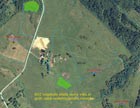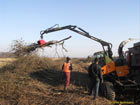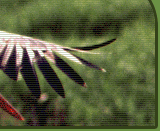Meadow Day Celebrated in March Even though thick snow has delayed arrival of spring, on Tuesday, March 14 the Latvian Fund for Nature organized the Meadow Day. The key issues covered during this event were more appropriate for the seasons with no snow results, methodologies and problems encountered while assessing biologically valuable grasslands as well as practical meadow management experience. Meadow Day Celebrated in March Even though thick snow has delayed arrival of spring, on Tuesday, March 14 the Latvian Fund for Nature organized the Meadow Day. The key issues covered during this event were more appropriate for the seasons with no snow results, methodologies and problems encountered while assessing biologically valuable grasslands as well as practical meadow management experience acquired in two LIFE-Nature projects: Restoration of Floodplain Meadows and the North Gauja. The meeting was chaired by the Head of the Latvian Fund for Nature Council, Ivars Kabucis, and it was attended by 32 experts, students and other interested parties. An active discussion was fueled by the audience who not only had substantial prior knowledge of the topic but was also eager to learn new things. Manager of the project on Detecting new biologically valuable grasslands sponsored by the Ministry of Agriculture, Daina Bojāre, presented results of the activities carried out. The attendees learned that currently there are over 56 thousand ha of biologically valuable grasslands in Latvia, according to the database of the Rural Support Service. Last year only 8 557 ha of new biologically valuable grasslands were deemed compliant with the criteria. In 2005, the total area reported for management was 23 970 ha and only 1/3 (ca. 34-36%) of those met the criteria for biologically valuable grasslands. Most of the areas (ca. 2/3 of the territory) turned out to be recently cultivated grasslands, either ploughed or improved by sowing additional grasses or clover. Biologically valuable grasslands have most often been detected in river or lake floodplains, sites with distinct undulating terrain, and wet sites with high level of ground water. Often the biologically valuable grasslands cover very small areas about 1/3 of all such grasslands are less than 1ha. Larger sites of biologically valuable grasslands (several tens of ha) are usually found in river or lake floodplains and they are important for bird diversity. Ivars Kabucis informed the audience about issues pertaining to detection of biologically valuable | 
| | Problematic detection of | | biologically valuable grasslands | | borders in the field | grasslands. It should be noted that in most cases everything was done according to the established methodology. Hence, the presentation gave insight into those cases when experts encountered difficulties, and they were as follows: - biologically valuable grasslands were bigger than reported by the land owner;
- physical demarcation of a certain site could be difficult;
- detection of biological quality by using ornithological or botanical criteria not always appropriate;
- presence of the land owners on site could be both positive and negative.
Andris Klepers, public relations coordinator for the LIFE-Nature project Restoration of Floodplain Meadows highlighted the current activities of the project. A year and a half into the project around 1700ha of valuable floodplain meadows have been restored in 15 Natura 2000 sites. Last year, 7 management plans have been drawn for half of the territories covered in the project. In the nearest future local municipalities, land owners and managers will receive summaries of the finalized management plans; the project will also prepare leaflets and put up outdoor information boards. Currently, work has been started on development of the management plans for the rest of the project sites.  | | Chip crusher at work | | in Dviete floodplains | Jānis Reihmanis, regional coordinator for Western Latvia of the LIFE-Nature project Restoration of Floodplain Meadows told the audience about practical meadow restoration methods. Illustrative photographs helped Jānis to demonstrate nuances of bush cutting and their subsequent utilization. Much attention was paid to motivating people to participate in activities that are necessary for nature conservation. Jānis described primary mowing, and pinpointed additional difficulties in management of floodplain meadows. The presentation session was finalized by Viesturs Lārmanis, manager of the North Gauja LIFE-Nature project. The skillfully compiled presentation covered broad aspects of meadow restoration and management. Many issues should have been discussed more in-depth, e.g., meadow restoration and future management from the perspective of ornithologists or botanists. Not everyone in the audience supported grazing, which was heavily favored by the project, as the only management method; it was not seen as superior to mowing even in the project farm that was described in the presentation. Work on developing Agro-environmental plans for farms has turned | 
| | Meadow restoration in North Gauja | out to be more substantial than initially thought. Viesturs also pointed to a number of state-level problems: discrepancies in mapped forest borders and those in real life, which causes significant problems for payment of the planned compensations for forest lands. The final event of this two-hour seminar was a film Väinameri made by the Estonian floodplain meadow management project. The key finding of the film was that triggering public interest and participation of farmers, entrepreneurs and businesses in the distant regions is particularly important. That fosters both meadow management for nature conservation purposes and welfare of local population. The closing question of the film was posed to encourage thinking: we might know a lot about wine, its flavors dictated by vineyards were the grapes have grown, but do we have the same amount of knowledge about food that we put on our tables? Andris Klepers |







